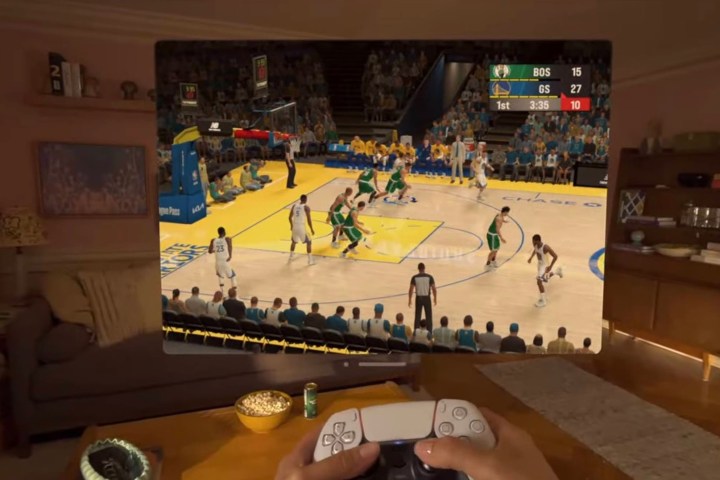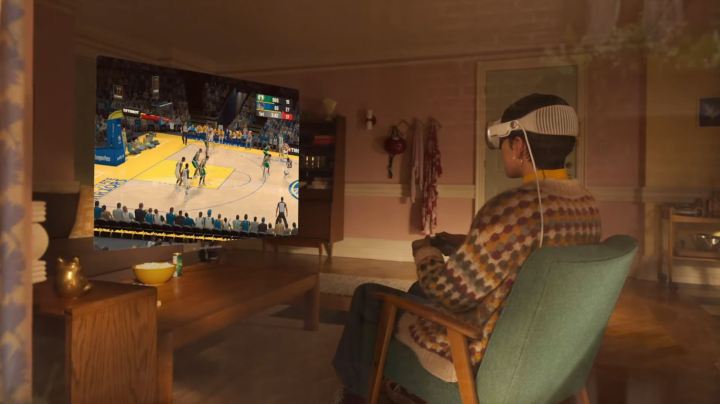The cat’s finally out of the bag: Apple is entering the AR/VR world in a big way. Revealed during the company’s annual WWDC stream, the Apple Vision Pro is an impressive XR headset that can be used for anything from writing emails to watching movies. Apple calls the device the “most advanced personal electronics device ever,” and that might be true — though the jury’s out on whether or not it’s worth the jaw-dropping $3,500 price tag.
Heading into the long-rumored reveal, there was one use case I was most curious to see: gaming. Video games have long been a crucial selling point for VR headsets, showing off the power and potential of any given device. Just last week, we got our first glimpse at the Meta Quest 3, which was revealed hours before a dedicated Meta Gaming Showcase. Considering how much Apple has been investing in gaming over the past year, I figured we’d get a dedicated block during the Vision Pro reveal that would similarly emphasize the platform as a gaming device.
That wasn’t exactly the case. While video games got a brief shoutout during the WWDC segment, Apple made one point loud and clear: The Vision Pro isn’t a new video game console.
Low-priority gaming
In the middle of Apple’s extended breakdown of the Vision Pro, the company gave a quick look at how gaming on the device works. There are only two things we know for sure so far. One is that the Vision Pro is compatible with controllers like the PlayStation 5 DualSense, just as other Apple devices are. The second is that the headset will support over 100 Apple Arcade titles at launch, including NBA 2K23. That’s everything that Apple had to show when it came to Vision Pro as a gaming device.
The reveal left a few questions marks. Chief among those is whether or not the Vision Pro will support true VR gaming in any way. During the reveal, we only see someone playing an Apple Arcade game on a flat screen within the helmet. It’s not the immersive experience you’d get from a Quest Pro or PlayStation VR2; the Vision Pro is essentially just a flat monitor that sits in front of your face.

It’s unclear if the platform can run actual VR games at the moment. It doesn’t come with any controllers like other devices, which would make it difficult for developers to port titles over to it. There’s always a chance that the Vision Pro could be compatible with something like the PSVR2’s Sense controllers, but it seems unlikely that the headset has a way to track them based on what we’ve seen so far.
If the device is a capable VR gaming platform, Apple didn’t make that point very clear during the showcase — and there was plenty of opportunity to do exactly that. Just last week, No Man’s Sky launched on Apple devices, which is a big moment for Mac gaming. The outer space game has full VR support on a variety of headsets, so one would think it would be the perfect way to show off what the Vision Pro is capable of as a gaming device. The fact that the presentation instead focused on ported mobile games may be a sign that Apple doesn’t see gaming as a driving function of its platform in the same way Meta does.

There’s nothing wrong with that, mind you. It’s clear that Apple is marketing the Vision Pro as an extension of devices like MacBooks and iPhones. It isn’t being positioned as a “Metaverse” product that has users walking around meeting rooms with legless avatars. Rather, it’s a practical device that could be used for daily tasks like composing emails or taking video calls. In that sense, Apple is bucking the usual VR marketing trend by showing entertainment as an added bonus of the tech rather than the heart of it. That should make the buying decision much easier for those who like using VR for specific reasons.
Perhaps there’s more to reveal down the line. Maybe there’s a slew of VR developers currently working on projects that will be revealed at a dedicated Apple Gaming Showcase. As it stands, though, VR gaming enthusiasts shouldn’t set aside $3,500 anytime soon. When it comes to its gaming potential, the Vision Pro appears to offer the same experience as placing your phone in a cardboard headset.
And you only need to spend $8 to accomplish the latter.




